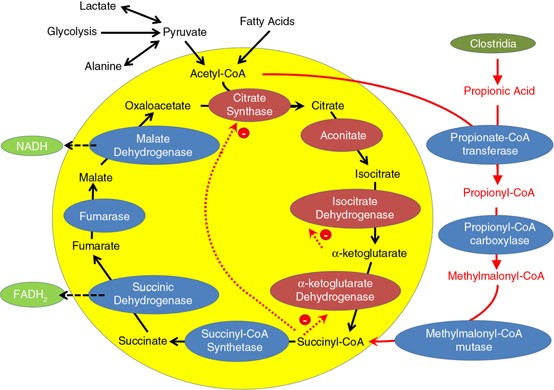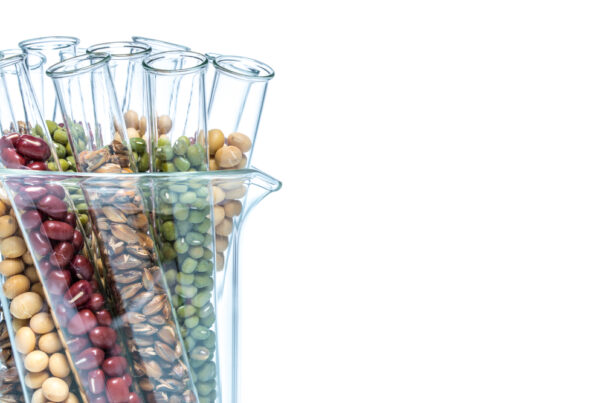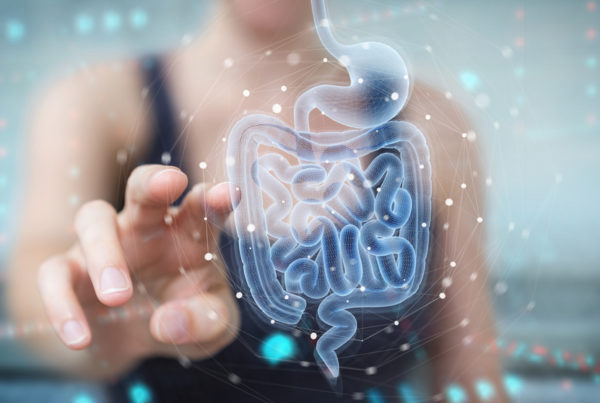Autism has reached epidemic levels and even though researchers are looking for autism genes and a one-cause theory, it will unfortunately (or fortunately, depending on how you look at it) never be as simple as that.
Autism is a multi-factorial complex disorder with many possible root causes and contributing factors and we need to treat it as such. But no one can deny that the way we have changed as a society since the industrial revolution has not contributed to the rise in autism at least to some degree.
Women all over the world try to do the best for their children and especially their unborn babies by trying to eat healthy and giving their offspring a good start to life. But these days, unless you have a tertiary qualification in nutrition, it’s becoming harder for the ordinary person to distinguish between what is ‘good’ and what is ‘bad’ on the supermarket shelves these days.
A study published in June 2019 in Scientific Reports, a Nature journal, showed how high levels of propionic acid (PPA) have an effect on the development of neurons in fetal brains during embryonic development. In truth it has been known for over 10 years in the functional medicine community that propionic acid is damaging to the fetal brain tissue and have associations with autism, but it is still good to see more research coming out in support of this.
So, what is propionic acid?
PROPIONIC ACID (PPA) IN OUR GUT
Propionic Acid (PPA) is a short-chain fatty acid (SCFA) produced from fermentation of undigested carbohydrates and some proteins by our intestinal bacteria. SCFA’s are necessary to maintain health and include fatty acids such as:
- Propionic acid
- Butyric acid
- Acetic acid
The type of SCFA produced depends in part on the type of bacteria in the gut, but in general plays a role in satiety and obesity with PPA linked to suppressed appetite.
PPA has a role in other biochemical functions and modulating cell signalling through:
- Specific free fatty and G-protein-coupled receptors
- Cell to cell interactions between gap junctions
- Gene expression by inhibiting histone deacetylase
- Immune function
- Neurotransmitter synthesis and release such as dopamine
- Influencing mitochondrial and lipid (fat) metabolism
PPA can also modulate the expression of cell adhesion molecules such as, neurexin 1 and neuroligin, and the FMR1 genes in PC12 cells.
This means that propionic acid is not necessarily ‘bad’. It plays a role, like many other things, in our physiological system. But like everything, it has to be in balance and within ratio to other metabolites in order to be beneficial to our health. In excess it creates problems.
Now we get to the food part.
PROPIONIC ACID (PPA) IN OUR FOOD
Propionic acid (PPA) or propionate is also a food additive often labelled as E280 and sometimes also called calcium salt of propanoic acid. PPA is an FDA approved preservative used widely in wheat, bread, cheeses, juices, as well as dried fruit. Understand that there are often many different names for the same preservative used in the food industry and that food labelling companies will choose a name that looks less harmful always in order not to scare potential customers away. This is why it can be very useful to carry a pocket book with you listing preservative numbers and their names when you do your shopping.
Propionic acid (PPA) is found in:
- Processed foods such as cheese and bread
- Other foods containing preservatives as PPA is used to increase the shelf life of packaged foods
Sodium propionate is also used in farm feeds as it induces early satiety which makes sheep and other animals feel full quickly so they eat less and save the farmer money on animal feed. How much of this preservative is found in our meat is hard to say, but certainly something worthwhile to think about. The antibiotic Monensin is often added to cattle feed to favour the growth of propionibacteria over acetic acid producers. And all of this certainly makes it a good reason to purchase organic as much as possible.
But guess what?
Propionic acid is also a by-product of clostridia bacterial overgrowth and this makes up a much bigger proportion of propionic acid than found in food preservatives.
PROPIONIC ACID (PPA) AND CLOSTRIDIA
Undigested carbohydrates due to enzyme deficiencies in the gut allows for more food to be fermented by gut bacteria. Clostridia is a commensal gut bacterial specie, but when overgrown can contribute to neurological and enzymatic disruption.
One of the ways it does this is by interfering with the host (your child’s) mitochondrial krebs/citric acid/tricarboxylic acid cycle.
Let’s explain:

http://journals.co-action.net/index.php/mehd/article/view/27458/39922
The big yellow circle represents the krebs cycle or citric acid cycle that occurs within the mitochondria, the energy powerhouse of our cells. Carbohydrates and protein are metabolized into glucose and then into pyruvate which we can see just outside on top of the yellow circle. Notice that pyruvate and fatty acids (thus food), enter the mitochondria (yellow circle) to form Acetyl-CoA. Acetyl-CoA is supposed to follow the arrows in this circle for the purpose of producing energy or ATP which feeds every single cell in our body to perform its function including the brain cells and liver/kidney cells involved in detoxification.
Clostridia bacteria produces propionic acid which we see on the right-hand side outside of the yellow circle. This propionic acid can rob your child’s cells of acetyl-CoA and pyruvate which is the entry point of fuel into the citric acid/TCA cycle and cause significant inhibition of complex I in the electron transport chain (ETC).
So, Clostridia is a propionic acid producing bacteria which can feed into the TCA cycle at the point of succinyl-CoA which you can see at the bottom right hand corner inside the yellow circle. If you follow the red arrows you can visualize how clostridia bacteria uses that whole right side of the yellow circle, produces all the metabolites on the right hand side outside of the yellow circle, and then puts it back into the yellow circle at the point of succinyl-CoA just to continue this process again.
It is essentially cutting the whole yellow circle, necessary for your child’s energy production inside their cells, in half.
This is how SCFA’s produced by gut bacterial overgrowth can have effects on the neurological system that may not be so favourable as it interferes with cellular energy production as well as the production of redox molecules necessary for cell signalling processes.
Carnitine is used to remove excess propionic acid and in this way clostridia overgrowth can also rob the cells of carnitine and thus affect fatty acid metabolism and ammonia clearance. This is why it is not uncommon to find abnormalities of fatty-acid metabolism with high short-chain and long-chain, but not medium-chain, acyl-carnitines in the brain tissue in those with clostridia overgrowth. This all seem to correlate with a higher incidence of neurodevelopmental regression in autistic children or children with learning challenges.
Supplementing with acetyl-l-carnitine to support fatty acid metabolism may be useful in these cases.
Clostridia bacteria is also a known disruptor of the DPPIV enzyme found in the small intestine which is necessary for the digestion of dairy protein (casein) and wheat protein (gluten) as well as proteins found in soy. This is one of the main reasons why children with autism seem to be intolerant or reactive to this trio of foods.
PROPIONIC ACID (PPA) AS AN ANTI-BACTERIAL AGENT
Remember that most of the cells in your body is made up of bacteria. So, what does it mean when you take an anti-bacterial component?
It’s the equivalent of taking antibiotics on a continual basis. You are continuously killing off beneficial microbial species and making space for more harmful microorganisms or less beneficial organisms to overgrow.
PPA is an antimicrobial preservative with the sole purpose (in this context) of preventing the growth of bacteria and also mold in food. As already mentioned PPA is found in many of the foods you buy in the supermarket including meat products.
EFFECT OF PROPIONIC ACID (PPA) ON THE BRAIN
Propionic acid once absorbed from the gut into circulation crosses the blood brain barrier and enters the brain where it can exert its affects. PPA tends to disrupt the natural balance between brain cells by reducing the number of neurons and stimulating the over-production of glial cells. This is important because even though glial cells are important in the development and protection of neuron function, too many of them will disturb the connectivity between neurons by shortening and damaging the pathways. And it’s the connectivity that enables communication between brain cells and the rest of the body.
This disruption in communication is often what we see manifesting in the behaviours of children affected by autism such as:
- Repetitive behaviour
- Mobility issues
- Inability to interact with others or altered social interactions
- Obsessive compulsive tendencies
- ASD-type behaviours
- Tics and hyperactivity
- Aversion internal cues making kids picky eaters
- Reactive astrocytosis and activated microglia
- Epileptiform-like spikes in the hippocampus, neocortex, and basal ganglia
- Alteration of several neurotransmitters including glutamate, dopamine and norepinephrine
It also triggers brain inflammation which is a common finding in autistic children.
There are also other biochemical disruptive processes that propionic acid is known for, such as:
- Redox molecule imbalances
- Phosphatidylethanolamine (PEA) abnormalities
- Mitochondrial dysfunction
- Acyl-carnitine deficiencies
- Altered carnitine metabolism
PROPIONIC ACID (PPA) AND AUTISM
There are numerous studies that show much higher levels of propionic acid in stool samples of autistic children than in non-symptomatic children. From its effect on the neurological system we can see how this metabolite is responsible for many of the symptoms we as clinicians see in the autism spectrum.
Many, if not all, of autistic children have impaired carbohydrate digestion and absorption which will make it more likely for excessive propionic acid production via fermentation in their digestive systems.
The question is whether there needs to be more education provided to pregnant women and the importance of eating fresh organic food instead of packaged food, and whether there needs to be better regulation in the food production industry preventing companies from using potentially harmful chemicals as part of our food production.
We also need to look beyond the preservatives used and discussed here and consider that processed and packaged foods contain much lower levels of nutrients such as B vitamins, folate (not synthetic folic acid added to packaged foods) and minerals such as zinc and magnesium important for processes such as cell division, DNA formation, methylation, detoxification, growth, gene expression, etc.
Clostridia is also a bacteria that is commonly found in sterilized hospital environments and is responsible for many secondary infections that people leave with after a hospital visit. This puts mothers and their babies at risk during childbirth which needs to be considered as well.
To simplify, the following may be risk factors that we need to consider:
- Mother or baby eating a highly processed food diet containing high amounts of preservatives that include propionic acid.
- Mother or baby eating a highly processed food diet containing high amounts of preservatives that kills of ‘healthy’ gut bacteria and leave room for bacteria such as clostridia to overgrow and produce more propionic acid.
- Mother or baby having some gut issues or low levels of digestive enzymes allowing more undigested carbohydrates to be fermented and produce propionic acid.
- Born in a hospital or environment with high prevalence of clostridia bacteria when the immune system of mother and/or baby is compromised and not well supported.
TAKE HOME MESSAGE
- Before, during and after pregnancy, and for always, eat fresh food as much as you can.
- Avoid processed and packaged foods fortified with synthetic nutrients, vitamins and minerals and opt to get your nutrients from fresh food and especially organically grown food.
- Avoid foods with long lists of ingredients. Rule of thumb here is that even if you do choose to purchase a packaged food, go through the different brands and choose the one with the shortest list of ingredients. The longer the list and the more unpronounceable the ingredients, the more you should be avoiding it.
- Understand that this is just one preservative under the microscope. What about the other thousands of preservatives that are approved on the market?
- Understand that this is just one piece of the puzzle when it comes to autism and that there are many other variables to consider when it comes to this complex and often misunderstood disorder. Each child is different which is why it is important to work with a health professional who has experience in this field.
- Mothers can be pro-active and get tested to assess their digestive health before they fall pregnant or even during pregnancy and change components of their diet or supplementation based on their ratio of gut bacteria that their baby may inherit during the birthing process.
Autism is off course a complex multi-factorial disorder and more than just what’s discussed in this article, but these things are actionable.
References:
https://medicalxpress.com/news/2019-06-foods-key-autism.html
http://www.ncbi.nlm.nih.gov/pmc/articles/PMC3747729/figure/F0001/
https://healthengine.com.au/info/food-additives





